This question is inspired by Connectorless USB on a PCB. I saw a cool USB LED on AliExpress that can be inserted in either direction:
I'd like to build a board with a similar symmetric connectorless USB plug, but I am pretty sure the unused side of the connector will short out against the two tabs that I see on the inside of the metal sleeve of most USB Type-A sockets:
Since the AliExpress board works, I assume that a portion of its circuit handles the case where the +5V lead on the connector touches the sleeve. I bet that responsibility lies with the two diodes I see on the board near the connector.
If these assumptions are correct, would you please draw a partial schematic that shows the relationship between the diodes and the two sides of the connector? If nobody answers, I'll use a continuity tester on one of these USB LED boards to deduce the circuit myself, and then I'll post an answer. But I am a novice with electronics design, and I'd appreciate the expertise of someone who really gets what's happening in this circuit, rather than my own blundering observations with a multimeter.
And an extra bonus question: what is the function of the two tiny angled sections on the AliExpress board's connector that are absent on almost all other male USB plugs?
Do they do anything? Are they racing stripes?
